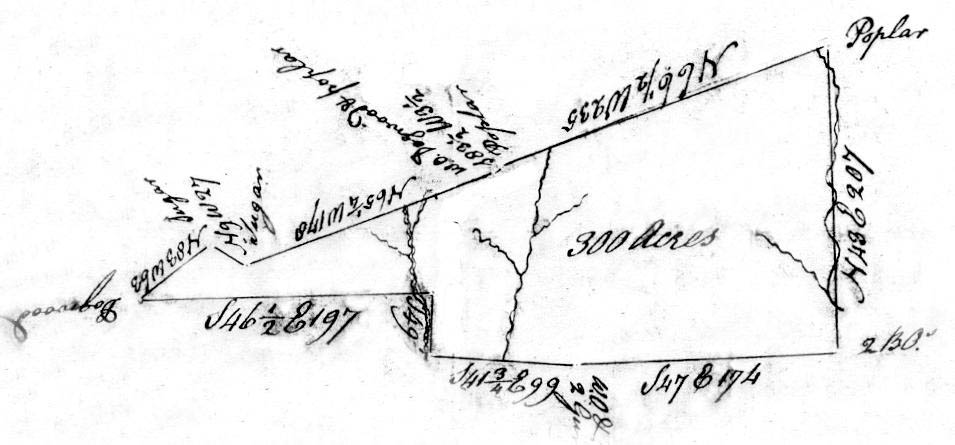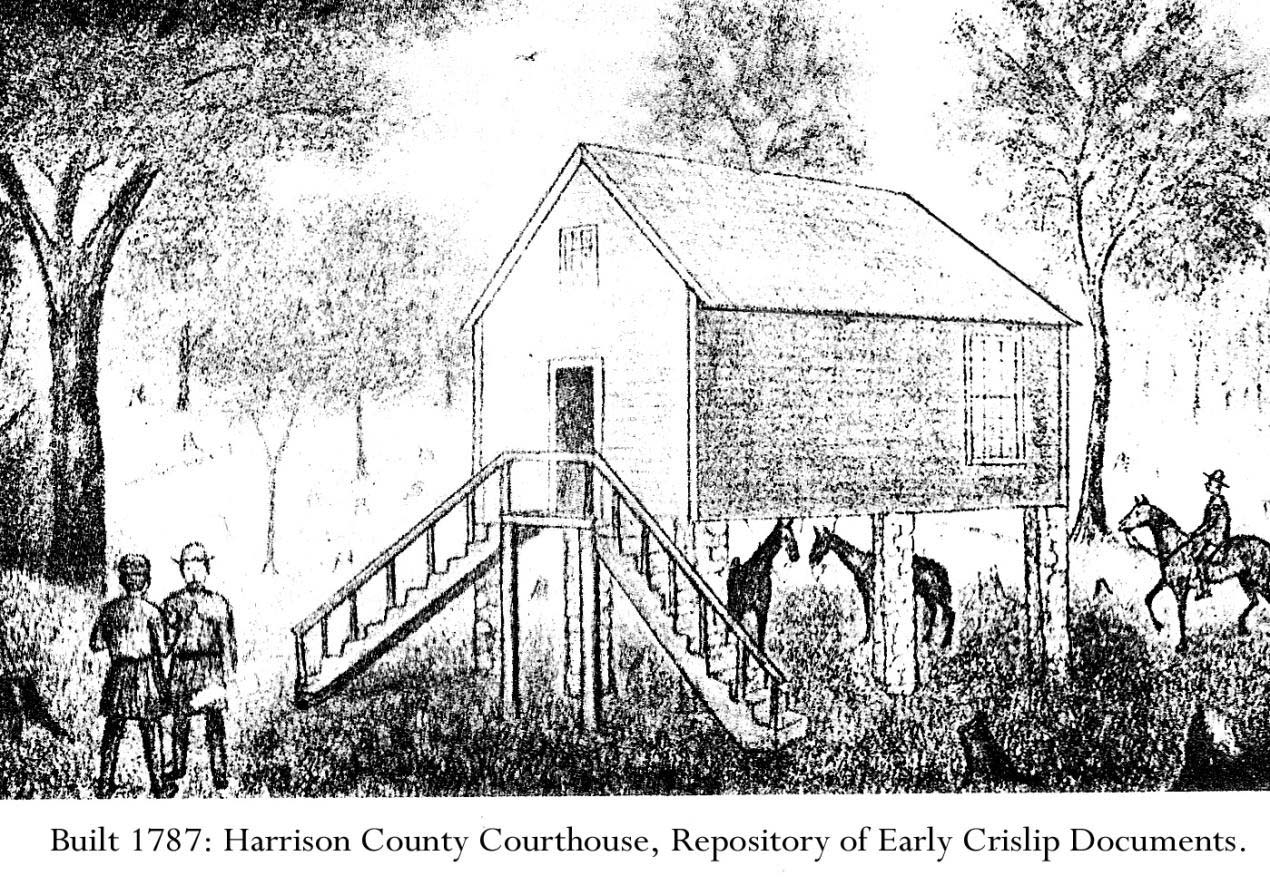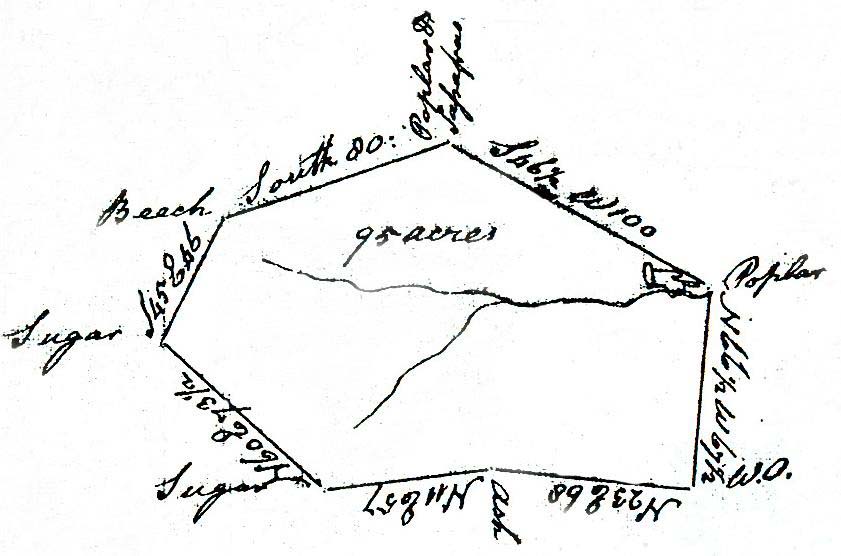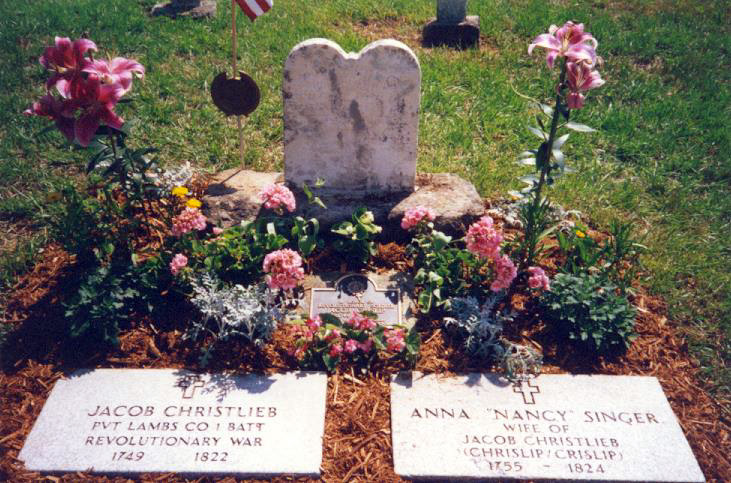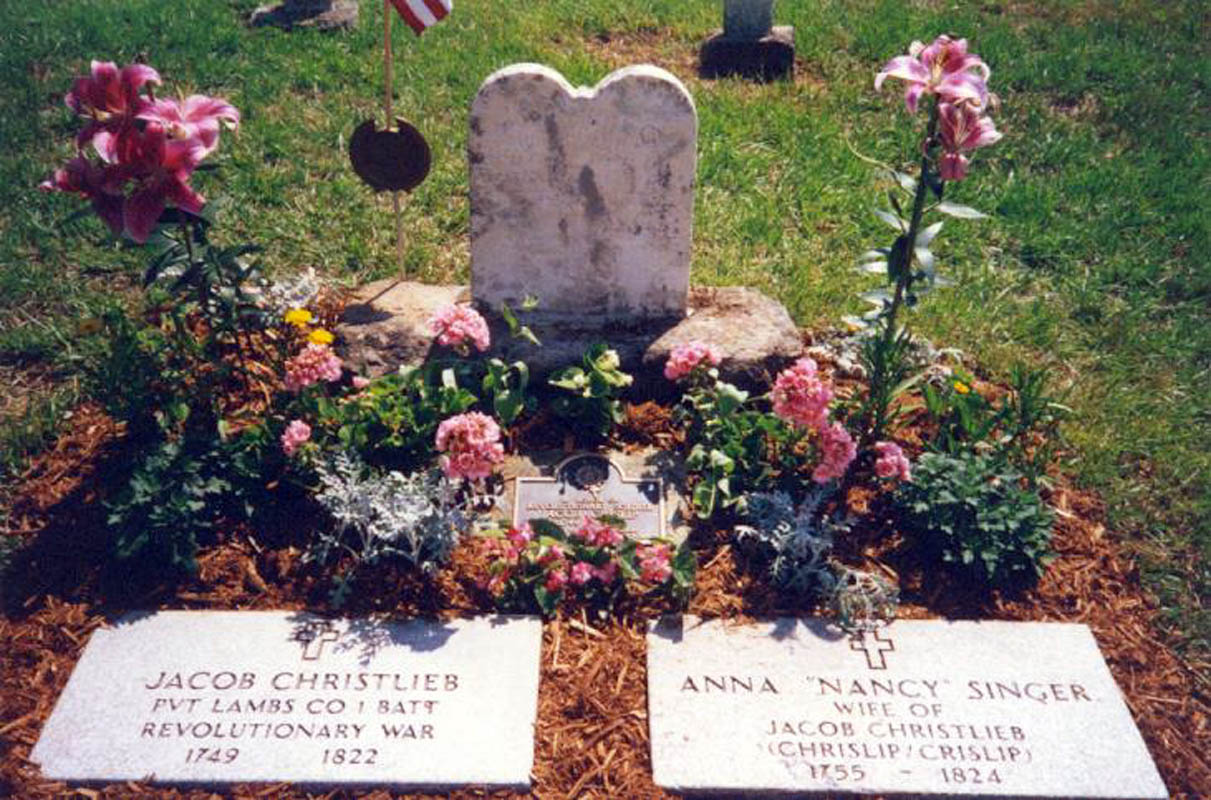Jacob's Land Acquisitions in Harrison County
After living on his land for many years, Jacob finally received his warrant for the 300 acres in 1799. Jacob received his land via an exchange preemption warrant. Preemption warrants were usually granted to persons who had settled on the land prior to its being under state control. These were basically squatters who had made their homes and farms on land not yet in possession of the United States Government or any State government. In recognition of these squatters’ rights, preemption warrants were issued to them. This enabled them to purchase, for a very small sum, the land on which they had settled, thereby gaining legal title to the land.
Jacob’s 300 acres of warranted land had a complex past. The land, which he received clear title to in 1799, had once been part of a 1000-acre tract that had been purchased by a John Tucker in 1781 for £400. In 1782, the 1000 acres passed from John Tucker to James Neal, the purchase price being £400. An endorsement on the reverse side of John Tucker’s warrant read: “I do hereby assign unto James Neal all my right title, claim and interest of the within warrant for value rec’d. of him as witness my hand this __ day of __ 1786.” The number of the Treasury Warrant was No. 1668.
Preemption warrants were also used as a form of currency, being widely bought, sold, traded, and exchanged. Some investors amassed huge quantities of warrants, and thereby rights, to land that they would sell in smaller parcels to later settlers.
After James Neal purchased the 1000 acres from John Tucker, he received a new warrant for the land, which was filed as Land Office Treasury Warrant, No. 232. On the reverse side of the warrant are these endorsements:
"300 acres of this warrant transferred to John Radcliff who transferred the same 300 acres to Jacob Christleb; 300 acres of this Warrant was transferred by Survey in the name of James Neal bearing date August 1795; 300 acres satisfied by survey in the name of Jacob Christleb bearing date 8th of July 1797.”
The front side of Warrant No. 232 contains what is believed to be an error: Instead of reading “James Neal, assignee of John Tucker,” it reads “James Neal, assignee of John Morgan.”
In summary, Jacob Christlieb received his 300 acres of warranted land directly from his neighbor, John Radcliff, who had received the acreage directly from James Neal. The 300 acres was originally part of a tract of 1000 acres of warranted land that James Neal purchased from John Tucker in 1782. John Tucker had purchased the 1000 acres in 1781.
The purchase price of Jacob’s land and the circumstances surrounding his procuring it from John Radcliff remain unknown. One of the most misleading clues in tracing Jacob’s 300 acres was the fact that the treasury warrant had been assigned the wrong number by the writer of the grant. Instead of being filed as No. 232, it was filed as No. 234. Entered incorrectly, the mistake went undetected for more than 200 years. What is interesting about the error is the fact that Treasury Warrant No. 234 pertains to another tract of 1000 acres in Harrison County. Identified as Exchange Description Warrant No.2120, the acreage was purchased by Charles Stuart on the very day (April 19, 1782) that John Tucker’s land was transferred to James Neal. The price paid by Stuart was also £400.
With both transactions occurring on the same day, it is understandable that the error was made in assigning file numbers to the warrants. It is also understandable why persons examining File 234 would conclude that Jacob’s land had been partitioned from Charles Stuart’s tract, as his land was located on Stuart’s Run in Harrison County.
The acreage on which Jacob and Nancy Christlieb settled was located on Elk Creek, a tributary of West Fork River, Harrison County’s greatest watercourse. By the time Jacob received his warrant for the 300 acres in 1799, he was 50 years old and had been living on the land for a number of years. Although the exchange preemption warrant reveals no information regarding the purchase price of the land, it does show that the acreage had been surveyed two years earlier. The survey was probably made in preparation for Jacob’s receiving the title that was granted from Richmond.
Within the oral tradition of the family is the story that an “unknown claimant” challenged Jacob’s rightful ownership to his land. Inasmuch as there is no court document regarding any challenge to Jacob’s rightful ownership, it can be assumed that the problem was resolved out of court, if it indeed ever went to court. County histories report that, in those early days, it was not uncommon for more than one person to lay claim to the same property. Such claimants were usually considered troublemakers and were often whipped and driven from the community by friends of the rightful owner.
Jacob acquired more land via treasury warrants. Two years before his death, he received full title to 95 acres of land from the Commonwealth of Virginia, on September 1, 1820. Described as “situated on both sides of Stewart’s Cabbin Run,” the Treasury Warrant was issued from Richmond under the name, Jacob Christleb. The deed was recorded at Clarksburg on January 1, 1821. Harrison County Survey Book, 4, p. 479.
Thus, 14 years after Jacob Christlieb’s demise, the settlement of his estate was finally concluded.
After Nancy died, youngest son, Samuel, purchased a double-tablet marble headstone to mark the gravesites of his parents. Although the Biblical verse, which had been carved in small-sized letters near the bottom, was no longer legible, Jacob and Nancy’s names, years of their deaths, and ages when they died, were legible into the early 1980s. By the end of the century, all had eroded away.
It is believed that the years of birth for Jacob and Nancy, which appear in Benjamin Franklin Christlieb’s The Christlieb Family, were taken from their gravestone. The inscription on the marker gives Jacob’s age at death as 75 years, thus giving B.F. Christlieb reason to believe that Jacob had been born in 1747, which is incorrect.
According to the church register at Dürkheim, Jacob was 14 years old when he was confirmed there in 1763. For sure, he would not have been confirmed at age 12. Genealogically speaking, the information in the church record would take precedence over what was inscribed on the headstone. It will never be known if Samuel gave the wrong information or if the stone cutter made a mistake. According to the headstone, Nancy was 67 years old when she died in 1824. Thus her birth year would have been 1755.
In the 1990s, new gravestones were procured and placed by the Christlieb-Chrislip-Crislip Family Association to mark Jacob's and Nancy’s graves.

